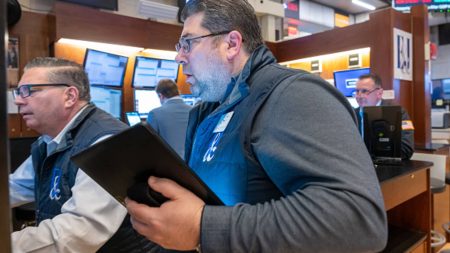In March, inflation rose to 3.5% from a year ago, up from 3.2% in February. While this figure is significantly lower than the pandemic-era peak of 9.1% in 2022, it remains above policymakers’ target of around 2%. Progress in the fight against inflation has somewhat stalled recently due to persistent high housing costs, which make up a significant portion of the CPI inflation index. Despite this, broader evidence does not suggest a renewed surge in inflation, although it may take longer than expected to bring the rate back to target.
Gasoline prices increased in March, contributing to the overall rise in inflation. Higher oil prices, global oil demand, controlled output among major oil-producing nations, and tensions in the Middle East have all influenced the increase in gasoline prices. This could filter through to higher prices in other areas since transportation and distribution costs impact goods and services. Economist Mark Zandi is particularly concerned about rising energy prices, as they negatively impact consumer buying power and sentiment.
Other notable areas contributing to inflation include motor vehicle insurance, medical care, recreation, personal care, and apparel. While some categories have seen price decreases, such as used cars, new vehicles, and airline tickets, others like shelter, motor vehicle insurance, and medical care have continued to rise. Prices for groceries have remained stable overall, with some categories experiencing slight increases but others remaining unchanged.
Supply-and-demand imbalances have been a key driver of inflation, with disruptions in supply chains and changes in consumer buying patterns during the Covid-19 pandemic contributing to high inflation rates for goods. The shift towards physical goods and increased demand, along with wage growth in the labor market, have also fueled inflation. While supply-chain issues have largely been resolved, goods inflation is expected to contribute less to disinflation moving forward, with services likely playing a larger role in driving inflation rates lower.
Housing, which falls into the services category, has seen stubbornly high inflation rates despite predictions that it would start to moderate. Housing costs make up a significant portion of the CPI inflation index, and disinflation in this category would have a significant impact on overall inflation readings. Economists expect housing inflation to decrease eventually, given positive trends in prices for new tenant rental leases, but the timing of this moderation remains uncertain.
Overall, despite the rise in inflation in March, economists believe that inflation is moderating overall, albeit at a slower pace than expected. While certain factors like high housing costs and rising energy prices continue to pose challenges, progress is being made in other areas. As supply-chain issues resolve and demand shifts back towards services, inflation rates are expected to gradually return to target levels.















